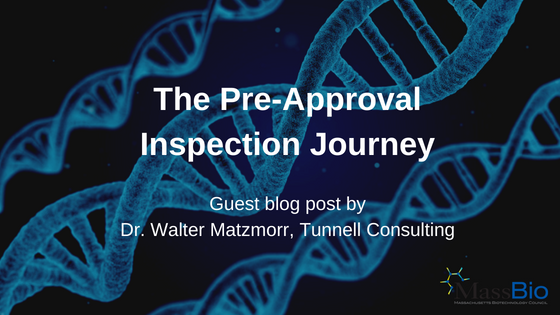
Being capable of manufacturing a drug is only one part of the Pre-Approval Inspection (PAI) process, and manufacturing capability alone does not guarantee approval. Those companies with experience in this area will already have a process in place for preparing for the PAI, but smaller companies and startups may face more of a struggle and may need some guidance. If internal resources are limited, an external review may help minimize risk and contribute towards preparedness for this important inspection process.
Being ready for the PAI is a major milestone in the successful approval of a new product which includes three main objectives: Readiness for commercial manufacturing, verification that the process and test methods are in conformance with the original application, and a data integrity audit to ensure that data management practices ensure the integrity of the data throughout development, manufacturing, monitoring, and product testing.
Those three objectives cover a wide area, spanning from the development phase to the current manufacturing footprint, which may include third-party sites and contract test labs. In some cases, the PAI may be more limited, for example, if there is a change in the manufacturing site or the manufacturing process. The FDA will in any case apply risk-based priority inspection criteria, making their decision based on facility risk, product risk, and process risk. This risk-based approach would therefore assign a high risk factor to a startup with a new product in a new facility using a new process technology; on the other hand, lower risk is assigned in the case of a product that has already been approved but is just moving to a new facility.
Taking time to prepare for the PAI is always a positive step, but two scenarios in particular make preparation essential. In the first scenario, an established organization that already has some experience with PAIs may do best with a mock PAI that simulates the real inspection. This process would include inspection training and coaching. A major benefit of this simulation is that it may bring some observations or critical issues to light, which can then be addressed before the real PAI takes place.
For those organizations that have less experience with the PAI, or those that are facing their first PAI, the mock inspection will not be enough. Preparation for the PAI will have to include a bigger transformation where the organization moves out of their research and development environment into a mindset of commercial production.
PAI represents a major milestone, regardless of whether the company is experienced or is a startup with their first product. Either way, PAI readiness will help minimize the risks – but appropriate planning is essential. Preparedness will include three milestones: Technical readiness, GMP readiness, and PAI readiness.
The process of achieving PAI readiness may take as long as two years, including getting the facility itself into a state of technical readiness, and also training personnel and establishing procedures and quality systems to ensure compliance with CGMPs.
In the case of an established organization with some PAI experience, technical and GMP readiness are typically already in place, and PAI readiness is addressed through the mock inspection and other assessments and audits. For those with little or no experience however, more time will need to be devoted to the readiness process.
The technical readiness milestone involves ensuring that the facility has achieved technical readiness, and that the equipment operates as planned. Verification is done through commissioning and qualification, based on a pre-defined Commissioning and Qualification plan. The process description will be in final draft form, and the process validation plan and process control strategy will have been developed, and test methods, change control procedures, and documentation practices will be in place.
The GMP readiness milestone is complete with the finalization of the process description and master batch records, definition of the process control strategy, and implementation of sustainable quality systems. Verification of this milestone requires comprehensive training and coaching as needed, and area-specific audits. Compliance with CGMP regulations are verified at this step, and at this point, a streamlined process with clear roles and responsibilities from the very beginning will help in optimizing the process.
After those two milestones are addressed, inspection training and coaching will help ensure that any potential challenges are addressed. Training and coaching will include all levels of the site organization, from management to the shop floor. A coach will be able to provide guidance on how to manage the inspection process, and how to respond to different situations that may come up during the inspection. Finally, after addressing any potential issues that may have come up and conducting a mock inspection, the organization will have achieved a state of PAI readiness.
The PAI represents verification that the company has the right procedures and processes in place, and that the process is compliant with the filing, and as such it is much more involved than other routine GMP inspections. Startups and smaller companies will face several challenges along the journey to PAI readiness, but successful preparation can be achieved with good planning and preparation. The use of an experienced coach will help minimize risks and ensure that process controls and quality systems are ready from the very beginning.